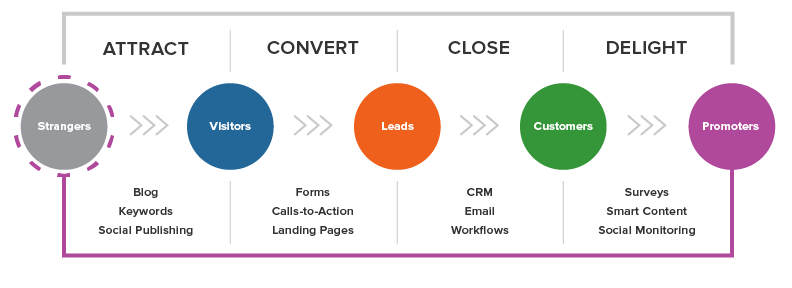Top Challenges in Marketing for Startups


Being a startup is trendy. However, to say the least, startups aren’t made for the faint of heart. Those who have the guts and courage to try it now: multiple challenges are being faced by growing businesses on a daily basis.
Modest budgets, small teams, and limited resources put startuppers in a situation where they have to find proper solutions to these drawbacks in a timely yet effective manner. Just imagine: initially, you’re a no-name, but you have to create awareness. Your marketing budget is limited, but you desperately have to generate sales opportunities. You work 24/7, but you still need more time. You’re constantly under pressure, but it’s good. Because you learn to overcome challenges and be a winner. Your brain is working at the speed of light, you could not help but generate tons of ideas. That is why sometimes you come up with some interesting solutions as this necessity demands an original approach.
If you’ve been on the startup scene for years, you should have heard about “growth hacking”. If you’re just thinking about launching your venture, this term (introduced by Sean Ellis in 2010) describes “a process of rapid experimentation across marketing channels and product development to identify the most effective, efficient ways to grow a business“. In short, this method is centered around a creative approach and non-traditional methods to achieve rapid growth. This is the most challenging (still exciting) part for a marketer in a startup: one has to generate demand for the product and create opportunities for sales.
In our previous article in this series, we covered the birth and the early stages of your venture. Below we’ll talk about 3 marketing challenges (and how to overcome them too) you will face while marketing your products and service.
Market/Product Fit: Did you talk to your customers?
As we have already concluded in the first article, a business doesn’t start with a product, but rather a need. No matter how hard you try to push a product or service, if there’s no need for it, well…it is the fastest way to go disappear without gaining anything (except for experience).
Despite hundreds of warnings, many startups neglect this rule and perish. Here’s how eCrowds, a web content management system company, commented on their strategic mistake:
A golden business rule: know your customers. Meanwhile, you have to bear in mind that they change so their needs might change as well. A proper and well-executed customer analysis should help you in this situation. There’s no alternative for this part: the disregard for customers’ feedback will lead to a guaranteed failure.
When you are developing a marketing and media plan, you must figure out:
- Who your target customer is
- Where they’re “hanging out” (what websites they visit, which TV channels they watch, newsletters they read, etc.)
While researching you should do the following:
- Identifying your target audience
- Audience segmentation (how different members of your audience should or could be targeted
- Competitive analysis
- Customer surveys
- Customer online browsing habits
- Audience preferences (what they read, listen to, or watch)
- The types of media your audience prefer
- Audience pain points in relation to your product or service
If you build it, they will come
Most startup founders find themselves closely attached to their products. It’s more like a parents-children relationship. You watch your product grow, you make it better by investing your time and efforts. So no wonder one may easily get fooled by believing that “my product is cool no matter what happens”. On the contrary, you have to pay attention to your customers and adapt your product to their changing needs.
Competition: What gap can your product fill?
Each industry is being influenced by well-established players which make sure the penetration of new ventures would be difficult and painful. Nowadays, corporations take startups—in their baby phase—far more seriously than, say, 20 years ago. Some of them employ monopolistic strategies that discourage startups, some are just buying them just to play it safe. You may consider these recent Fortune 500 acquisitions of startups as solid proof. For instance, General Motors spent around $1 billion on Cruise Automotive, a 30-person autonomous vehicle startup that hasn’t even launched a product. Unilever spent $1 billion on Dollar Shave Club, a razor startup that adds just $200 million in revenue to Unilever’s €53.3 billion bottom lines. Or Wal-Mart spending $3.3 billion on Jet.com.
According to MassChallenge and Imaginatik’s recent research, corporates are getting more and more eager to work with startups. 23% of them see it as “mission-critical”, and 82% said it’s at least “somewhat important.”
So quite an important question arises. For Christ’s sake, is there any gap in the industry I can fill with my product? And the answer would be – yes, you can, just keep on looking. Firstly, conduct research and find out what consumers think about the industry, products, and services. It will give the initial insights you can use when creating your marketing strategy. Secondly, you have to discover what gap has been left for your product to fill in. Once the need and the competitive advantage of your product are identified, this advantage has to be developed.
The only way to be successful for your startup business is to solve a need and have a strong brand identity. In other words, instead of monitoring your competitors’ websites to figure out what they’re doing/saying, pay attention to what they’re…not saying/doing instead.
Candice Galek, CEO of Bikini Luxe talks about how she competed with big swimwear brands for search engine rankings:
Limited marketing budget: How can I ever win?
Marketing demands spending. However, in the early days of your venture, your marketing budget is either non-existent or just insignificant. At the same time, you need to make a real impact to penetrate through the density of competition. If that’s not a challenge, well, tell me what else is.
Again: concentrate on finding out who your target audience is and where are the places they usually hang out. This analysis will help you to narrow down your marketing options to the point you know what’s good for you (and what isn’t).
Anyway, there are two ways you can market. The first one is outbound marketing, which includes activities like advertising, email marketing, or meetups. Generally speaking, these are the activities that serve to attract your potential target consumers.
If you want a piece of advice here, go email marketing. As we already have said, marketing options may vary, but email marketing is still the king. The chart below represents e-mail advertising spending in the United States from 2014 to 2019 (in billion U.S. dollars)

In contrast, inbound marketing includes marketing efforts that contribute to the consumer finding the product or the company. In the area of digital marketing, inbound marketing activities may involve developing a website that attracts visitors naturally, through search engine optimization, social media channels, blogging, etc. When it comes to social media, methods such as productive Instagram management, targeted Facebook ads and running different ads on YouTube can help achieve a lot of success. An elaborated Facebook ads strategy will increase your chances of success even more. Inbound marketing takes a lot of time, but it will cost you less than advertising – all it takes is your creativity and writing skills.
What your weapon of choice would be here? Go for blogging – an area that many startups struggle with. Firstly, it’s free and it helps drive traffic to your website. Good news – you have more visitors now. Then it helps convert that traffic into leads – so you’ll probably have a customer or two. Finally, blogging drives long-term results – for months and years to come, you can continue to get traffic and leads from that particular blog post. It goes without saying, that the quality of your content should be good. Once you have excellent content going on in your website, consider using paid traffic sources as an additional option of getting traffic to your website.

Nowadays, there are lots of marketing options at your disposal. On one hand, it’s awesome: the variety of choices makes you try numerous ways and do not stick to one method. On the other hand, this abundance of tools can be overwhelming and confusing. “What should I use? This one, or that one? Or maybe both? And Peter told me about this fantastic service he had used the previous month. Oh, I don’t have time for all this!” Do not worry: you don’t have to embrace all, you just need a few tools that work exceptionally well, especially for you.
Outro
It’s great if you have built the most innovative product in your industry. But it’s merely nothing if you struggle to resolve the startup marketing challenges outlined in this post. Are you interested in getting more info on how we can help you with your startup? Contact us for a free consultation.
Let’s start
If you have any questions, email us info@sumatosoft.com




